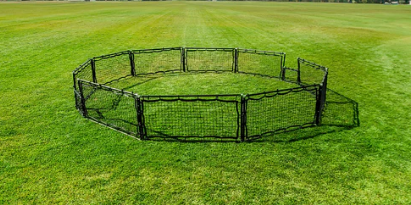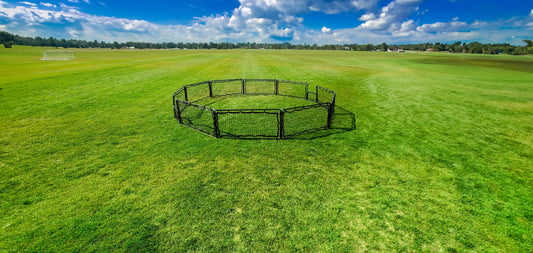Physical education plays a crucial role in the overall development of students, and gym class games are an integral part of this curriculum. Beyond simply providing entertainment, these games offer a multitude of benefits that contribute to the physical, mental, and social well-being of students. In this article, we will explore the various advantages of incorporating gym class games into school curricula, highlighting their impact on physical fitness, cognitive development, social interaction, and emotional well-being.
- Promoting Physical Fitness: Gym class games are a powerful tool for promoting physical fitness among students. Through various activities such as tag, dodgeball, and relay races, these games encourage students to engage in cardiovascular exercise, build strength, enhance motor skills, and improve overall physical health. Regular participation in gym class games contributes to the development of strong bones and muscles, reduces the risk of obesity and chronic diseases, and boosts energy levels. Additionally, these games often involve stretching exercises and warm-up routines, which promote flexibility and prevent injuries. By fostering a love for physical activity from an early age, gym class games lay the foundation for a lifelong commitment to a healthy lifestyle.
- Cognitive Development: Engaging in gym class games not only benefits physical health but also stimulates cognitive development. These games require students to strategize, plan, and make quick decisions, enhancing their problem-solving skills and critical thinking abilities. By participating in team sports like basketball or soccer, students learn the importance of collaboration, communication, and teamwork. Furthermore, gym class games improve hand-eye coordination, spatial awareness, and motor planning, which are essential skills for academic success. The combination of physical activity and mental stimulation during these games enhances cognitive function, concentration, and memory, ultimately improving academic performance.
- Social Interaction: One of the key advantages of gym class games is their ability to foster social interaction and promote positive relationships among students. Team-based games promote camaraderie, sportsmanship, and a sense of belonging. Through collaboration and cooperation, students learn to value teamwork, respect others' abilities, and develop leadership skills. Additionally, gym class games provide opportunities for students to interact with peers from diverse backgrounds, fostering inclusivity, empathy, and cultural understanding. These games also teach students important life skills such as communication, conflict resolution, and fair play, which are crucial for success in both personal and professional domains.
- Emotional Well-being: Gym class games have a significant impact on students' emotional well-being. Physical activity stimulates the release of endorphins, which are known as "feel-good" hormones, leading to reduced stress, anxiety, and depression. Participating in gym class games provides an outlet for students to release pent-up energy, frustration, and emotions, improving their mood and overall mental health. Moreover, these games offer a platform for students to set goals, overcome challenges, and build self-confidence. By celebrating individual and team achievements, students develop a positive self-image and a sense of accomplishment. The inclusive nature of gym class games ensures that every student, regardless of their athletic ability, can participate and experience success, boosting their self-esteem and overall emotional well-being.
Incorporating gym class games into school curricula yields numerous benefits. These games not only promote physical fitness but also contribute to cognitive development, social interaction, and emotional well-being. By recognizing and embracing the advantages of gym class games, educators can empower students to lead healthier, happier, and more fulfilling lives.
Below is a list of various common gym class games.
Parachute: Parachute is a popular gym class game that involves a large, colorful parachute and a group of participants. The game is not only fun and exciting but also promotes teamwork, coordination, and physical activity. The parachute used in the game is typically circular or octagonal in shape and made of lightweight, durable fabric. To play the game, the participants, usually students, gather around the perimeter of the parachute, holding onto the edges with both hands. They are typically spaced evenly around the parachute, ensuring that everyone has a grip on it. The game can accommodate a wide range of group sizes, from small teams to large classes. Once the participants are ready, a teacher or designated leader can initiate a variety of activities using the parachute.

Badminton: Badminton is a popular racket sport that can be played as a recreational activity or in competitive settings. It is a fast-paced and dynamic game that requires agility, hand-eye coordination, and strategic thinking. The objective of badminton is to hit a shuttlecock, also known as a birdie or shuttle, over a net and land it in the opponent's court, while preventing the opponent from doing the same. Badminton can be played in singles (one player on each side) or doubles (two players on each side) formats. Doubles often involves more complex strategies and teamwork, as players need to coordinate their movements and communicate effectively. Playing badminton offers numerous benefits, including improved cardiovascular fitness, enhanced reflexes and hand-eye coordination, increased agility and footwork, and strategic thinking. It is a sport that can be enjoyed by players of all ages and skill levels, whether it's for recreational purposes or in a competitive setting.

9 Square: 9 Square is an outdoor game that is played with a large inflatable or metal frame that is divided into nine smaller squares. Each player stands in their own square, and the objective of the game is to eliminate players from other squares by bouncing a ball into their square. The rules are, Set up the frame and divide into nine squares, with each player standing in their own square. The player in the center square starts the game by bouncing the ball into one of the other squares. The player in that square must hit the ball into another square, and so on. If a player fails to hit the ball into another square, they are eliminated and must leave the game. Variations of the game include adding rules such as no holding the ball or no hitting the ball with the same hand twice in a row.
Wall Ball: Wall ball is a popular and energetic playground game that is enjoyed by many children and teenagers. It is a fast-paced game that involves throwing a ball against a wall and reacting quickly to catch it or retrieve it after it bounces back. Wall ball can be played in various settings, such as schoolyards, parks, or sports facilities, and it requires minimal equipment, making it accessible and easy to set up. Wall ball can have various rules and variations, depending on the preferences of the players. Wall ball is a game that offers several benefits to players. It promotes hand-eye coordination, reflexes, agility, and spatial awareness. It also encourages quick thinking, strategy, and decision-making, as players must assess the trajectory of the ball and react accordingly. Additionally, wall ball can be an excellent form of exercise, as it involves running, throwing, and catching, which contribute to cardiovascular fitness and overall physical activity.
Shark Attack: Shark Attack is a thrilling and suspenseful game often played in swimming pools. It involves a group of players trying to make it from one side of the pool to the other without being tagged by the "shark" or the designated player who acts as the predator. The objective of the game is to reach the safe zone without being caught by the shark. Shark Attack not only provides excitement and entertainment but also offers several benefits. The game promotes swimming skills, water confidence, and agility. It encourages physical activity, coordination, and strategic thinking as players try to evade the shark. Additionally, the game fosters social interaction, teamwork, and friendly competition among participants.
Kickball: Kickball is a sport that is played with a large, inflated ball that is similar in size and shape to a soccer ball. The game is similar to baseball, with one team trying to score runs by kicking the ball and running around the bases, while the other team tries to prevent them from doing so by catching the ball and tagging the runners out. Kickball can be played with teams of any size, but is typically played with between 6 and 15 players on each team. The game is played on a field that is similar in size to a baseball diamond, with four bases and a home plate. The pitcher rolls the ball towards the kicker, who attempts to kick the ball as far as possible and run to first base.
Red Rover: Red Rover is a classic and energetic playground game that involves two teams of players trying to break through the opposing team's linked arms. It is a game of strength, strategy, and teamwork. The objective of Red Rover is for a player to run from their team's line and try to break the chain of linked arms on the opposing team. If the runner succeeds in breaking the chain, they can choose one player to take back to their team. The game continues until one team has successfully captured all the players from the opposing team. Red Rover offers several benefits to the players. It promotes teamwork, communication, and strategy as players work together to defend their chain or break through the opposing team's chain. The game also improves coordination, agility, and spatial awareness as runners navigate through the linked arms. Additionally, Red Rover encourages physical activity, sportsmanship, and social interaction among participants.
Rob the Nest: Rob the Nest is a basketball game that involves shooting, rebounding, and strategic play. It is typically played with a group of players and can be enjoyed in both recreational and competitive settings. The objective of the game is to score points by successfully shooting the basketball and retrieving the rebound for additional scoring opportunities. Rob the Nest offers several benefits to the players. It helps develop basketball skills such as shooting, rebounding, and defensive techniques. The game also improves teamwork, communication, and strategic thinking as players work together to score points and prevent the opposing team from scoring. Additionally, it provides a cardiovascular workout, promoting physical fitness and endurance.
Soccer: Soccer, also known as football in many parts of the world, is a popular team sport played by millions of people around the globe. It is a game in which two teams of eleven players each try to score goals by getting the ball into the opposing team's goal, using only their feet, legs, torso, and head. The game is played on a rectangular field with a goal at each end. The ball is typically made of leather or synthetic materials and is kicked by players to pass it between teammates or towards the opposing team's goal. The game is usually played in two halves, each lasting 45 minutes, with a break in between. The team that scores the most goals at the end of the game wins. If the game ends in a tie, extra time may be added, or a penalty shootout may be used to determine the winner. Soccer requires speed, agility, endurance, and teamwork. Players must be able to run, dribble, pass, shoot, and defend effectively in order to be successful. The game also promotes sportsmanship, fair play, and respect for others, making it a great choice for individuals and groups looking for a fun and challenging team sport.
Gaga Ball: Gaga Ball is an excellent game choice for family picnics, providing endless fun and engagement for all ages. This fast-paced, inclusive game combines elements of dodgeball and tag, but with a twist. Its low impact nature and simple rules make it accessible to everyone, regardless of fitness level or skill. Gaga Ball promotes active participation, strategic thinking, and friendly competition, fostering a sense of teamwork and camaraderie among family members. With its compact size and minimal equipment requirements, it can be set up easily in any outdoor space. Whether you're a young child or a grandparent, Gaga Ball guarantees laughter, excitement, and memorable moments for the entire family.

In conclusion, gym class games play a vital role in promoting physical fitness, social interaction, and overall well-being among students. They offer a fun and engaging way to incorporate physical activity into the curriculum, helping to combat sedentary lifestyles and promote a lifelong commitment to health. Gym class games provide numerous benefits, including improved motor skills, cardiovascular fitness, coordination, and teamwork. Through games, students learn valuable life skills such as sportsmanship, communication, problem-solving, and goal setting. They develop resilience, perseverance, and the ability to work collaboratively as part of a team. These games also foster a sense of belonging, unity, and camaraderie among students, breaking down barriers and promoting inclusivity. Moreover, gym class games help alleviate stress, improve mental well-being, and enhance cognitive function. They provide an outlet for creativity, self-expression, and strategic thinking. The physical activity involved in these games releases endorphins, leading to improved mood, reduced anxiety, and increased focus. It is crucial for educators and policymakers to recognize the importance of gym class games and prioritize their inclusion in school curricula. By providing opportunities for students to engage in enjoyable and active play, we can lay the foundation for a healthy and balanced lifestyle. Gym class games instill a love for physical activity, encouraging students to pursue lifelong fitness habits outside of school. Let us embrace the benefits of gym class games, supporting the implementation of diverse and inclusive game options that cater to the interests and abilities of all students. By promoting active play, fostering social connections, and nurturing physical and mental well-being, gym class games contribute to the holistic development of our students, preparing them for success in both school and life.







